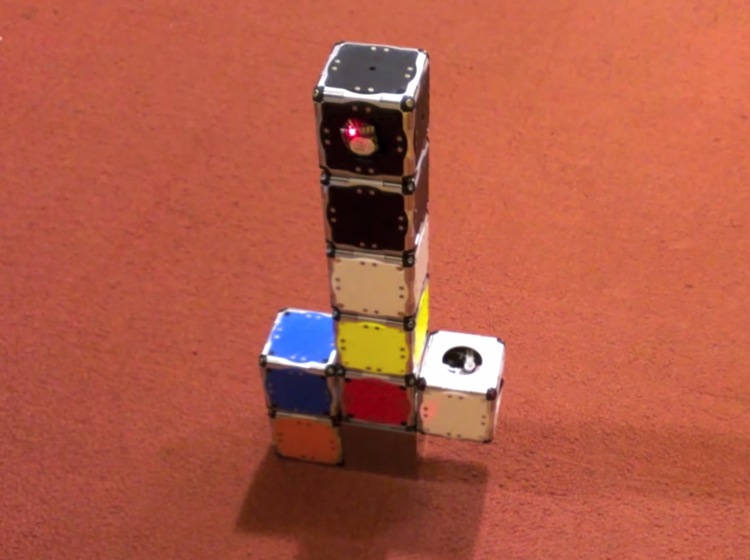Smart Matter
IEEE Spectrum talks about smart matter, which, in fact, is an object with self-organizing particles. It's like seeing a werewolf in science fiction. But all this is real, at least at the research stage.
Microelectronics made it possible to create very tiny computers, thus allowing them to assemble themselves and respond to changes. IEEE addresses two options.

One of them is connected with smart particles that use magnets to maneuver in the right direction. Each claytronic atom or catom uses local GPS navigation to determine where it should be located in the structure. The challenge is to develop such navigation that will allow particles to assemble into complex structures.
Today, the Carnegie Mellon team developing this approach has succeeded in creating centimeter-sized catoms that really work. Now this team is working on reducing the size of a catom to a millimeter using photolithography.
Another approach, the Massachusetts Institute of Technology, consists of “smart pebbles” that must use the rules to determine which “pebbles” should stick together. Pebbles that do not have a job (i.e. their place in a complex structure) will simply disappear. Imagine the capacity of such pebbles in which you can simply lower your hand and pull out the desired object. The complexity of this approach is the transmission of signals between the pebbles - the coordination and coordinates of the "sticking together" pebbles.
At the moment, both approaches exist only in the research version and are not practiced. But with the growth of miniaturization of electronics and mechanical components, one can hope for the appearance of smart matter in the near future.
If successful, these technologies will make today's leaders - 3D printers - obsolete technology. At least some models are for sure. Smart material is significantly different from the materials used by current 3D printers. Having become practically applicable, “pebbles” and catom will become leaders in use. With the help of program instructions, a command is given in which particular object it is necessary to form smart matter.
One of the valuable properties of smart matter will be a return to its original form. As a result, you will always have at hand an inexhaustible amount of smart matter that can return to its original state on command.
Meet me in the future!
Translation of an article from www.fabbaloo.com .
Microelectronics made it possible to create very tiny computers, thus allowing them to assemble themselves and respond to changes. IEEE addresses two options.

One of them is connected with smart particles that use magnets to maneuver in the right direction. Each claytronic atom or catom uses local GPS navigation to determine where it should be located in the structure. The challenge is to develop such navigation that will allow particles to assemble into complex structures.
Today, the Carnegie Mellon team developing this approach has succeeded in creating centimeter-sized catoms that really work. Now this team is working on reducing the size of a catom to a millimeter using photolithography.
Another approach, the Massachusetts Institute of Technology, consists of “smart pebbles” that must use the rules to determine which “pebbles” should stick together. Pebbles that do not have a job (i.e. their place in a complex structure) will simply disappear. Imagine the capacity of such pebbles in which you can simply lower your hand and pull out the desired object. The complexity of this approach is the transmission of signals between the pebbles - the coordination and coordinates of the "sticking together" pebbles.
At the moment, both approaches exist only in the research version and are not practiced. But with the growth of miniaturization of electronics and mechanical components, one can hope for the appearance of smart matter in the near future.
If successful, these technologies will make today's leaders - 3D printers - obsolete technology. At least some models are for sure. Smart material is significantly different from the materials used by current 3D printers. Having become practically applicable, “pebbles” and catom will become leaders in use. With the help of program instructions, a command is given in which particular object it is necessary to form smart matter.
One of the valuable properties of smart matter will be a return to its original form. As a result, you will always have at hand an inexhaustible amount of smart matter that can return to its original state on command.
Meet me in the future!
Translation of an article from www.fabbaloo.com .
